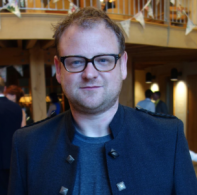"How GPS is used has made the headlines of the prestigious New York Times" with Barry Brown
Barry Brown joined the Mobile Life center as a studio director and co-director of the centre in April 2012, and has recently been appointed a Professor at Stockholm University. He was previously an associate professor at the University of California, and his recent work has focused on the sociology and design of leisure technologies - computer systems for leisure and pleasure. His position is funded by SRA funds.

His recent research into how GPS is used has made the headlines of the prestigious New York Times, along with the voice of america radio station, and international newspapers such as the Sydney Morning Herald, and the Star Tribune. "GPS demands new skills and new forms of driving," Barry says. "A map is incomplete - with technology extra magic can be added to make it work. There is some extra stuff we have to adjust to." Barry is convinced that we adjust to new technology - such as the GPS - and learn how to overcome the 'ordinary' problems of their use. He stresses that GPS is safer than an ordinary map. GPS is less distracting, and has causes few accidents. "GPS makes it easier but not easy," Barry stresses.
In his most recent work Barry is working on a study of the use of mobile phones used by pedestrians. Researchers can follow people with small wearable cameras and software that record their interactions with an iPhone. This lets them collect unobtrusive data about how mobile devices and iPhones are used 'in the wild' and over a long period of time. "What is fascinating is how much of activity on the device is dependent on what is going on around the device - conversations, buying things, where you are going, and so on. This makes us understand how pedestrians use the iPhone's maps, and how that gets combined with information search more broadly.

